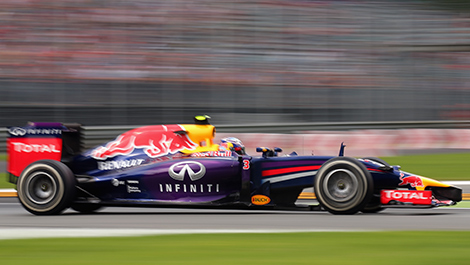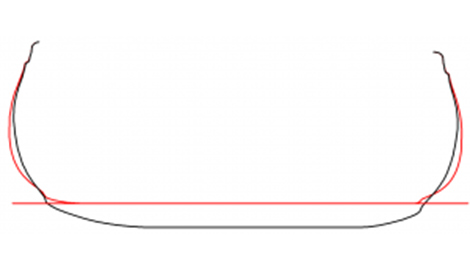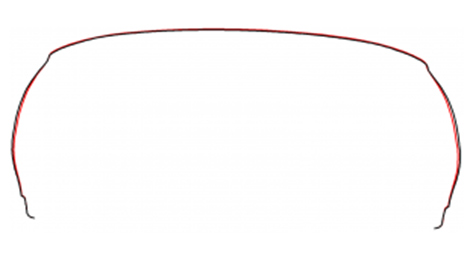Sep
12th
Stay connected Subscribe to our RSS feed
From Pirelli
At last weekend's Italian Grand Prix in Monza, the Red Bull Racing RB10 of Daniel Ricciardo reached 362.1 km/h (while slipstreaming) on the main straight.
At this speed, the wheel is rotating around 2800 times every minute, or just under 50 times every second.
These extreme speeds have a serious effect on the tires. At full speed, which is frequently the case during a lap of Monza, an F1 tire is often subjected to a downforce load up to 1000 kilograms. Another important aspect is that the high speeds generate a huge centrifugal force on the tire itself.
Because of these loads, the footprint of the tire increases and the part of the tire against the ground is subject to a lot of deformation, as shown in illustration 1 below. The structure of the tire has to be incredibly strong and elastic to cope with this constant flexing.
At the same time, the upper section of the tire (which is not in contact with the ground - illustration 2) is subjected to a big centrifugal force, but despite this the shape of the tire does not change much: stretching by just 1%. This is due to the low weight and extremely high stiffness of the materials developed by Pirelli for Formula 1.
The F1 tires are designed precisely with these extreme forces in mind: during laboratory testing, before they even see a race track, the tires are exposed to higher loads and forces than they would normally experience, and accelerated to speeds of up to 450 km/h. Not only that, but they are also fired into solid surfaces at speeds in excess of 250 km/h: simulating the impacts with kerbs for which Monza is also famed.
At last weekend's Italian Grand Prix in Monza, the Red Bull Racing RB10 of Daniel Ricciardo reached 362.1 km/h (while slipstreaming) on the main straight.
At this speed, the wheel is rotating around 2800 times every minute, or just under 50 times every second.
 |
| Daniel Ricciardo, Red Bull Racing. (Photo: WRi2) |
These extreme speeds have a serious effect on the tires. At full speed, which is frequently the case during a lap of Monza, an F1 tire is often subjected to a downforce load up to 1000 kilograms. Another important aspect is that the high speeds generate a huge centrifugal force on the tire itself.
Because of these loads, the footprint of the tire increases and the part of the tire against the ground is subject to a lot of deformation, as shown in illustration 1 below. The structure of the tire has to be incredibly strong and elastic to cope with this constant flexing.
 |
| In red: beyond 350 km/h, the part of the tire in contact with the asphalt undergoes notable deformations. |
At the same time, the upper section of the tire (which is not in contact with the ground - illustration 2) is subjected to a big centrifugal force, but despite this the shape of the tire does not change much: stretching by just 1%. This is due to the low weight and extremely high stiffness of the materials developed by Pirelli for Formula 1.
 |
| Beyond 350 km/h, the highest part of the tire only changes shape by 1%, despite being subject to an enormous centrifugal force. |
The F1 tires are designed precisely with these extreme forces in mind: during laboratory testing, before they even see a race track, the tires are exposed to higher loads and forces than they would normally experience, and accelerated to speeds of up to 450 km/h. Not only that, but they are also fired into solid surfaces at speeds in excess of 250 km/h: simulating the impacts with kerbs for which Monza is also famed.
 The latest auto news, reviews, prices, product and vehicle releases.
The latest auto news, reviews, prices, product and vehicle releases.